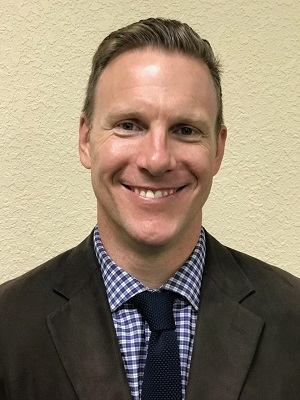The biggest trend in commercial auto insurance is “increasing claims costs," says independent agent Larry St. John. "Courts are deciding that the primary factor in major bodily injury claims is often distracted driving and the courts now believe an insured has a massive influence on permitting that."
 Larry St. John
Larry St. John
President
Eclipse Marketing and Insurance Services
Vacaville, California
How did you get started at your agency?
My dad was a direct writer and I started with his office back in the '90s and quickly saw the writing on the wall in terms of contract obligations, such as the carrier telling him where he needed to focus regardless of what was best for the agency. We agreed that the best future for me was the independent channel. As his carrier's appetite narrowed in the following years, we wound up writing far more on the independent side.
I've been nothing but thankful that he helped me pick the independent path. Individual carrier appetites continue to oscillate wildly, but we've been able to adjust to find carriers that can support the needs of our customers.
How did you get started in commercial auto insurance?
We've always focused on business coverages, particularly for underserved business groups and hard-to-place industries. It's funny how 20 years ago, auto almost just came with the account, but now it's often the problem child. It's maybe even the most problematic line for insureds, especially if they have had any claim activity.
Biggest industry changes?
Without a doubt, it's the trend of increasing claims costs. Catastrophe claims are on the rise, and courts are deciding that the primary factor in major bodily injury claims is often distracted driving and the courts now believe an insured has a massive influence on permitting that.
Frequently, small property damage claims are elevated to midsize because most damaged panels or components on a vehicle are now packed with computer chips that are substantially more expensive than the typical bodywork of a decade ago.
Biggest challenges?
It's been and continues to be a hardening market. Prices have increased across all the niches that we've worked in over the past years, but we're also seeing carriers leave California or try to pull back coverage breadth. It's a real wrestling match for nearly every renewal. We have to expect to work with underwriters for reasonable renewal terms because they are not offered by default.
We've been fortunate that we've kept strong relationships with carriers that have a healthy appetite for non-standard accounts—they've picked up the slack where the preferred markets have backed away. Our partnerships there have been worth a lot to those customers that need them.
Future trends in commercial auto?
More critical built-in underwriting that can lead to restrictions, limitations or exclusions. In other words, watch out for gotchas. Some carriers are trying to offer terms that are not preferred, whether it's by increasingly narrow definitions or underwriting restrictions built in with more restrictions than the actual policy form. Quality control is now really important, but that's just a hardening market for you. It looks like it'll be that way until carriers gain some stability on their loss trends.
Advice for a fellow agent?
Understand your carrier's experience and comfort zones. I think everybody in this space has been told by a mentor to do your homework and it's most important in a hardening market. I avoid saying “hard market" because I really don't think that's here yet.
I came into the industry hearing stories from the previous generation about hard markets where there simply wasn't an available home for a given line of coverage outside of a risk retention group or some other alternative risk program. And that's just not here yet for this segment, thankfully. But the more well-researched we are on available options for this distressed line, the better we'll be able to help our customers as they come face to face with the economics of increased claims costs.
Favorite success story?
No one single story, just the overall reminder for myself that the numbers don't lie: our retention is still way up, and we're still hearing “thank you" from our clients, so even though there's a lot more work involved for us in writing and keeping this line of coverage at the moment, that's OK. That's just a harder-market segment for you, and as long as we keep showing up, willing to put out whatever level of effort is needed to take care of the customer, it's going to be OK, and our book will continue to grow. It's just a reminder we have to keep repeating right now. But it's worth it.
AnneMarie McPherson is IA news editor.
